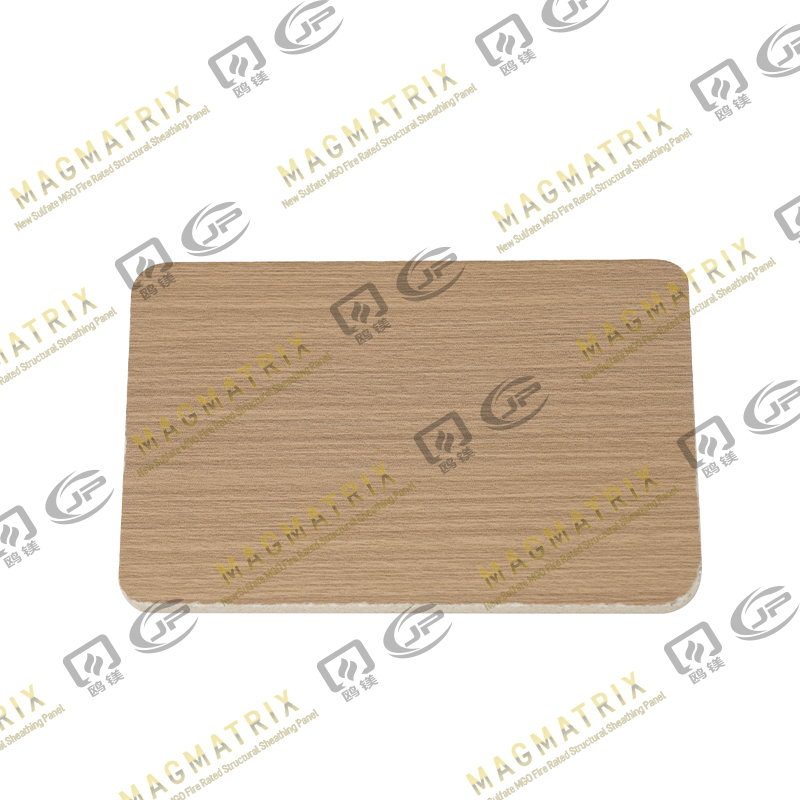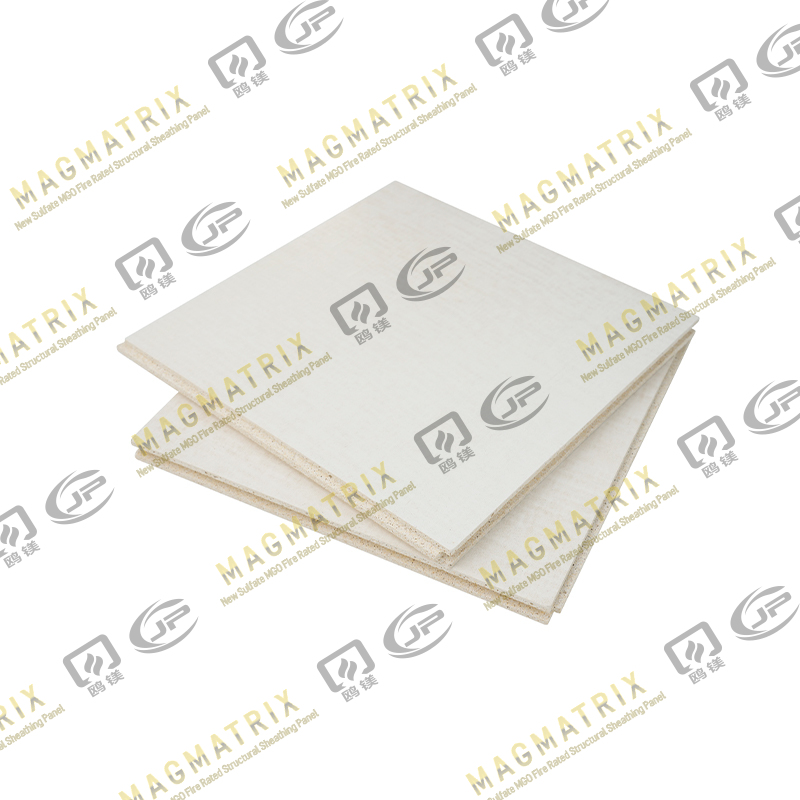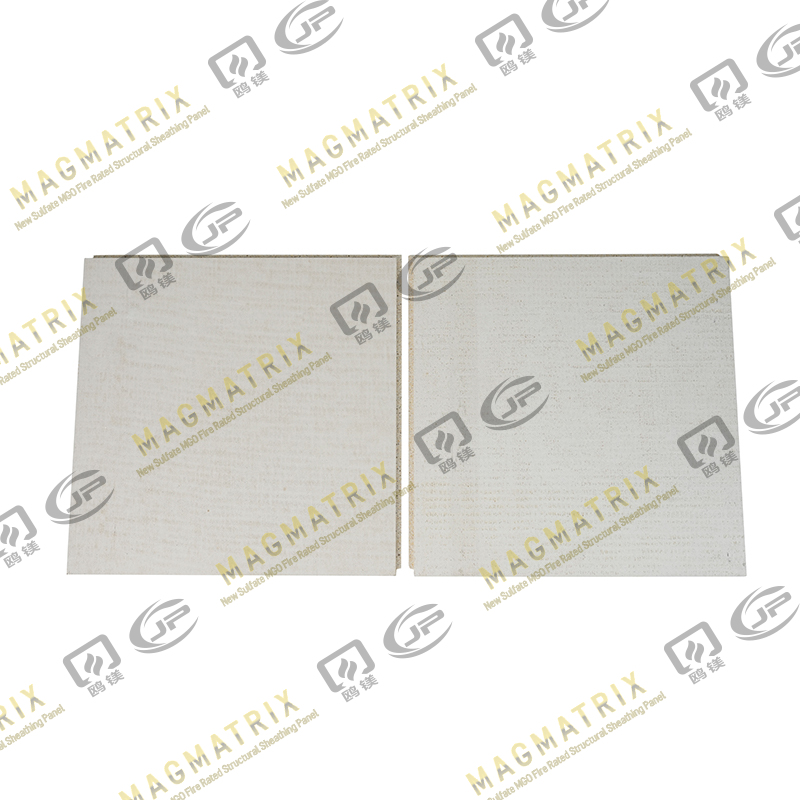
Key Takeaways
- Versatility & Performance: Magnesium Oxide (MgO) sheathing board offers exceptional performance across multiple critical areas of construction, including fire resistance, moisture management, and structural stability.
- Subfloor vs. Underlayment Distinction: Understanding whether to use MgO as a subfloor (structural layer supporting the finished floor) or an underlayment (thin layer placed over a subfloor for specific benefits) is crucial for optimal project outcomes.
- Enhanced Durability: MgO provides superior structural strength and impact resistance, contributing to longer-lasting flooring systems.
- Superior Moisture & Mold Resistance: Its inherent properties make MgO highly resistant to water damage and mold growth, making it an excellent choice for moisture-prone areas.
- Excellent Fire & Sound Control: MgO boards significantly enhance fire safety and contribute to better acoustic performance within buildings.
- Streamlined Installation: While requiring specific handling, MgO can offer efficient installation, potentially saving time and labor in the long run.
- Long-Term Value & Sustainability: Despite potentially higher upfront costs, the extended lifespan, reduced maintenance, and environmental benefits of MgO often translate to significant long-term value and improved indoor air quality.
- Broad Application: MgO is suitable for a wide range of projects, from residential homes to demanding commercial and institutional buildings, particularly in areas where performance requirements are high.
MgO Subfloor vs. Underlayment
Understanding the distinction between an MgO subfloor and an MgO underlayment is paramount to specifying the correct material for your construction needs. While both utilize the same base material (Magnesium Oxide board), their application and role within the flooring system differ significantly, impacting structural integrity, performance benefits, and installation methodologies.
A subfloor is the structural layer of a floor that is laid over the floor joists. Its primary function is to provide the structural strength and stability for the entire flooring system, supporting live and dead loads, and serving as the base for the finished floor. When MgO is used as a subfloor, it replaces traditional materials like plywood or OSB, leveraging its inherent strength, fire resistance, and moisture stability as the foundational layer.
An underlayment, conversely, is a thin layer of material placed on top of an existing subfloor (which is typically made of plywood, OSB, or concrete) and underneath the final finished flooring material (like tile, hardwood, or laminate). Its purpose is not structural load-bearing but rather to provide a smooth, stable, and protective surface, enhance specific performance characteristics (such as sound dampening, moisture barrier, or thermal insulation), or prepare the surface for a particular type of flooring. When MgO is used as an underlayment, it often serves to improve fire resistance, provide a dimensionally stable base for finishes, or offer superior mold and moisture protection over the underlying subfloor.
Summary Table
| Feature |
MgO Subfloor |
MgO Underlayment |
| Primary Function |
Structural support; foundational floor layer |
Surface preparation; performance enhancement |
| Position |
Directly on joists; underneath all other layers |
On top of subfloor; underneath finished flooring |
| Typical Thickness |
1/2" to 3/4" (12-19mm) generally |
1/4" to 1/2" (6-12mm) generally |
| Load Bearing |
Yes, primary load-bearing |
No, supports finished floor but not structural |
| Core Benefit |
Structural integrity, fire, moisture |
Smooth base, fire, mold, sound, dimensional stability |
| Connection Method |
Fastened to joists |
Fastened to existing subfloor |
| Replacement For |
Plywood, OSB subfloor |
Cement board, conventional underlayment |
Key Differences
The key differences between using MgO as a subfloor versus an underlayment boil down to their role, thickness, and load-bearing capacity:
- Structural Role: The most significant distinction is that an MgO subfloor is a primary structural component designed to bear the weight of the building’s occupants, furnishings, and the finished flooring. An MgO underlayment, however, is not structural; its purpose is to create an ideal surface for the finished floor and to add specific performance characteristics without contributing to the overall structural integrity of the building.
- Thickness: Due to their differing roles, MgO subfloor panels are typically thicker (e.g., 1/2" to 3/4" or more) to provide the necessary rigidity and strength for spanning joists. MgO underlayment panels are generally thinner (e.g., 1/4" to 1/2") as they are laid over an existing structural subfloor.
- Installation Method: A subfloor is directly fastened to floor joists, often requiring specific blocking or support for seams. An underlayment is installed over an existing subfloor, typically fastened with screws or staples, sometimes with adhesive, ensuring a smooth, flat surface.
- Performance Enhancement: While both offer fire and moisture resistance, using MgO as an underlayment can be a more targeted approach to adding these benefits to an existing or traditionally constructed subfloor system, especially in areas like bathrooms or kitchens where enhanced moisture and mold resistance are critical without needing to re-engineer the entire structural floor.
- Cost Implications: The material cost per square foot for subfloor-grade MgO might be higher due to its thickness, but it replaces a conventional subfloor. Underlayment-grade MgO is thinner and adds to the total cost of the flooring system as an additional layer over the subfloor.
Durability
Durability is a cornerstone of modern construction, directly influencing the lifespan, maintenance requirements, and long-term value of a building. Magnesium Oxide (MgO) boards offer significant advantages in this regard, whether employed as a structural subfloor or a protective underlayment, due to their inherent material properties.
Structural Strength
MgO boards exhibit excellent flexural and compressive strength, making them a robust choice for flooring applications. When used as a subfloor, MgO panels provide a remarkably stable and rigid base for the entire floor system. Unlike traditional wood-based subfloors that can warp, swell, or delaminate when exposed to moisture, MgO maintains its dimensional stability. This inherent rigidity helps prevent squeaks and movement in the finished floor over time, contributing to a solid and quiet walking surface. Its ability to withstand significant loads makes it suitable for both residential and light commercial applications where demanding performance is required.
As an underlayment, while not bearing primary structural loads, MgO’s inherent strength contributes to the overall integrity and longevity of the finished floor. It provides an exceptionally stable and flat surface that can help prevent cracking or movement in brittle finishes like tile or natural stone. The non-compressive nature of MgO ensures that the underlayment won’t degrade or compress under heavy foot traffic or static loads, preserving the integrity of the adhesive bond and the finished floor material above.
Impact Resistance
The dense and homogeneous composition of MgO board provides superior impact resistance compared to many conventional flooring substrates.
When MgO is installed as a subfloor, its robust nature means it is highly resistant to damage from dropped tools, heavy furniture, or general construction site impacts during the build phase. This reduces the likelihood of costly repairs or replacements before the finished flooring is even installed. Post-construction, it provides a resilient layer that helps protect the structural integrity of the floor from everyday accidents, minimizing the chance of localized depressions or weak spots that could affect the finished surface.
As an underlayment, MgO significantly enhances the impact resistance of the overall flooring system. It acts as a protective buffer between the finished floor and the structural subfloor. For example, under tile, its high impact resistance can reduce the risk of tile cracking due to dropped objects. Under resilient flooring or laminates, it helps prevent indentations or punctures from concentrated loads, maintaining the aesthetic and functional quality of the floor over years of use. This added layer of defense contributes to a longer-lasting and more aesthetically pleasing floor, reducing the need for premature repairs or replacement of the finished material.
Moisture & Mold
One of the most compelling reasons to choose Magnesium Oxide (MgO) board for modern construction is its exceptional resistance to moisture and its natural ability to inhibit mold growth. These properties make it a superior alternative to traditional wood-based products in environments prone to humidity or direct water exposure.
Wet Area Performance
Unlike plywood, OSB, or even some gypsum-based products, MgO board does not swell, warp, delaminate, or lose structural integrity when exposed to water or high humidity. This makes it an ideal material for applications in wet areas such as bathrooms, kitchens, laundry rooms, basements, and even exterior soffits or certain shower wall applications (when properly sealed and finished).
When used as a subfloor in wet areas, MgO provides a foundational layer that is inherently stable, even if plumbing leaks or spills occur. This stability ensures that the finished flooring above (e.g., tile, vinyl) remains flat and securely adhered, preventing issues like grout line cracking or adhesive failure that can arise from a moisture-compromised substrate. Its non-absorbent nature means that any incidental water exposure is unlikely to cause long-term damage to the subfloor itself, greatly reducing the risk of costly repairs or complete floor system replacement.
As an underlayment in wet areas, MgO excels at protecting the underlying structural subfloor from moisture penetration. For example, beneath tile in a bathroom or shower, it serves as a highly stable, non-hydroscopic barrier that prevents water from reaching and damaging the wood or concrete subfloor. This dimensional stability is crucial for tile installations, as any movement or swelling in the substrate can lead to cracked tiles and grout. MgO’s performance in these challenging environments provides greater longevity and peace of mind for the entire flooring system.
Mold Prevention
MgO board is inherently inorganic and does not contain cellulose, the primary food source for mold and mildew. This makes it naturally resistant to fungal growth. In contrast, wood-based products (like plywood and OSB) are organic and can provide a fertile breeding ground for mold if they become wet and remain damp.
When MgO is used as a subfloor or underlayment, it significantly contributes to a healthier indoor environment by actively deterring mold proliferation. Even in humid conditions or after minor water incidents, the lack of an organic food source means mold is far less likely to take hold and spread on the MgO surface. This passive mold prevention is a critical benefit, especially in homes or buildings where occupants may have allergies or respiratory sensitivities.
This inherent mold resistance translates to lower maintenance needs and a reduced risk of unpleasant odors or compromised air quality associated with hidden mold growth. By choosing MgO for your subfloor or underlayment, you are building in a proactive defense against one of the most persistent and damaging issues in modern construction.
Fire & Sound
Beyond structural integrity and moisture resistance, Magnesium Oxide (MgO) board offers significant advantages in enhancing building safety and comfort through its superior fire and sound control properties. These characteristics are vital for meeting stringent building codes and improving the quality of living and working spaces.
Fire Resistance
One of the most remarkable attributes of MgO board is its exceptional fire resistance. It is classified as a non-combustible material (ASTM E136) and achieves very high fire-resistance ratings, often up to a 0 flame spread and 0 smoke developed index. This is due to its mineral composition and the chemical process of magnesium hydration. When exposed to fire, MgO does not ignite, contribute fuel, or release toxic smoke, unlike many traditional building materials such as wood-based panels, which are combustible.
When used as a subfloor, MgO creates a significant fire barrier between floors, slowing the spread of flames and heat from one level to another. This added time can be crucial for occupants to evacuate safely and for firefighters to contain the blaze, potentially saving lives and property. Its ability to maintain structural integrity under high temperatures also means the floor system is less likely to collapse rapidly during a fire event. For commercial buildings or multi-story residential units, incorporating an MgO subfloor can contribute substantially to achieving required fire separation ratings.
As an underlayment, MgO adds an additional layer of non-combustible protection directly beneath the finished floor. While it doesn’t provide the same level of structural fire resistance as a full subfloor, it prevents flames from rapidly propagating across the floor surface or easily penetrating to the subfloor below, offering an extra safeguard in the event of a fire originating on the finished floor. This characteristic is particularly valuable in kitchens, laboratories, or other areas where potential ignition sources are present.
Sound Control
Sound transmission is a common concern in both residential and commercial buildings. MgO board’s density and unique cellular structure contribute to excellent acoustic performance, making it an effective material for sound control. It helps to both block airborne sound and dampen impact noise, leading to quieter and more comfortable interiors.
When employed as a subfloor, MgO’s mass and rigidity are effective at reducing the transmission of airborne sound (e.g., voices, music) between floors. More importantly, it helps to mitigate impact noise (e.g., footsteps, dropped objects), which is often a significant complaint in multi-story structures. Its solid, non-resonant nature absorbs vibrational energy, preventing it from transferring through the joist system and radiating into the space below. This creates a more serene environment, especially beneficial in multi-family dwellings, offices, or healthcare facilities.
As an underlayment, MgO can further enhance the sound-dampening qualities of a floor system. Placed directly beneath the finished flooring, it acts as a dense buffer that absorbs impact noise from foot traffic or other activities on the surface. This is particularly effective under hard surfaces like tile, hardwood, or laminate, where impact sounds can otherwise be highly reverberant. The added mass and damping properties of an MgO underlayment contribute to a higher Sound Transmission Class (STC) rating for airborne noise and a better Impact Insulation Class (IIC) rating for impact noise, significantly improving the acoustic comfort of the space.
Installation
The installation of Magnesium Oxide (MgO) board, whether as a subfloor or an underlayment, differs somewhat from traditional wood-based products. While it requires specific techniques and fasteners, it is generally considered straightforward for experienced builders. Understanding these nuances can help optimize project timelines and labor efficiency.
Process Steps
For MgO Subfloor Installation (Directly on Joists):
- Preparation: Ensure joists are level, dry, and properly spaced according to manufacturer specifications (typically 16" or 24" on center). Clear any debris.
- Layout: Plan panel layout to minimize waste and ensure proper staggering of seams. Panels should run perpendicular to joists.
- Cutting: MgO can be scored and snapped with a utility knife or cut with a circular saw using a carbide-tipped blade (dust extraction is highly recommended due to fine silica dust).
- Fastening:
- Adhesive: Apply a continuous bead of recommended subfloor adhesive (e.g., polyurethane-based) to the top of joists.
- Fasteners: Secure panels with corrosion-resistant, self-countersinking screws (e.g., coated deck screws or specialized MgO screws) spaced according to manufacturer guidelines (typically 6" along edges and 12" in the field). Ensure screws penetrate joists adequately.
- Expansion Gaps: Leave small expansion gaps (e.g., 1/8") between panel edges and at walls, as recommended by the manufacturer. MgO has very low thermal expansion, but minor gaps are still good practice.
- Sealing/Finishing: Depending on the finished flooring, seams may need to be taped with fiberglass mesh tape and skim-coated with a suitable patching compound, especially for resilient flooring.
For MgO Underlayment Installation (Over an Existing Subfloor):
- Preparation: Ensure the existing subfloor is clean, dry, flat, and free of defects. Address any squeaks or loose areas in the existing subfloor.
- Layout: Lay out MgO panels to stagger joints from the subfloor below.
- Cutting: Similar to subfloor, score and snap or saw.
- Fastening:
- Adhesive (Optional but Recommended): Apply a thin, even layer of latex-modified thin-set mortar or appropriate adhesive to the subfloor before laying the MgO panel. This creates a solid bond and helps fill minor imperfections.
- Fasteners: Secure with corrosion-resistant screws (e.g., cement board screws or coarse-thread drywall screws for wood subfloors) spaced typically 6-8" on center. Ensure fasteners penetrate the subfloor sufficiently but do not hit joists if possible (to avoid squeaks from multi-layer movement).
- Expansion Gaps: Leave slight gaps (e.g., 1/16") between panels and at walls.
- Sealing/Finishing: Tape and mud seams with alkali-resistant fiberglass mesh tape and a suitable skim coat or thin-set, creating a smooth, monolithic surface for the finished flooring.
Time & Labor
The time and labor required for MgO installation are generally comparable to traditional materials, with some specific considerations:
- Learning Curve: For crews new to MgO, there may be a slight learning curve regarding cutting techniques, specific fasteners, and handling. However, once accustomed, installation speed can match or even exceed that of materials like cement board.
- Cutting Efficiency: Scoring and snapping thin MgO can be quicker than cutting plywood with a saw, especially for intricate shapes. For thicker subfloor panels, a circular saw with dust collection is efficient.
- Weight: MgO panels can be heavier than equivalent plywood panels, potentially requiring two people for larger sheets, especially in thicker subfloor applications. This can slightly impact solo labor efficiency.
- Fasteners: The use of screws (rather than nails for some subfloor applications) can be slightly slower per fastener but provides a more secure, squeak-free installation. Specialized screw guns can speed this up.
- Dust Control: Due to the fine dust generated when cutting, proper ventilation and dust extraction are crucial. This adds a minor step but is essential for health and cleanliness.
Overall, while certain aspects may take slightly more care (like dust control), the efficiency gains from easy cutting and superior finished surface (for underlayment) often balance out, making the overall time and labor competitive.
MgO Installation Tips
- Read Manufacturer Guidelines: Always consult the specific MgO board manufacturer’s installation instructions for precise fastener types, spacing, and span ratings. This is critical for warranty and performance.
- Proper Fasteners: Use corrosion-resistant fasteners designed for dense board materials. Self-countersinking heads are a plus.
- Dust Management: Wear appropriate personal protective equipment (PPE), including a respirator (N95 or better), safety glasses, and gloves. Use a circular saw with a vacuum attachment or cut outdoors to minimize dust exposure.
- Acclimation: While MgO is dimensionally stable, allowing panels to acclimate to the ambient temperature and humidity of the installation environment for 24-48 hours can be beneficial, especially for underlayment.
- Edge Protection: The edges of MgO boards can be somewhat brittle until installed. Handle panels carefully to prevent chipping.
- Flatness is Key: Ensure the underlying surface (joists or subfloor) is as flat and level as possible. MgO will conform somewhat but works best on a stable base.
- Sealing: For wet areas, ensure all seams and fastener heads are properly sealed with an appropriate waterproof membrane or sealant before installing finished flooring.
- Tools: A standard utility knife, straight edge, circular saw, drill/driver, and a good quality square are essential.
- Disposal: MgO scraps can typically be disposed of with general construction waste. Check local regulations.
Cost & Value
When evaluating any building material, cost is a primary factor. While Magnesium Oxide (MgO) board may sometimes have a higher upfront material cost than traditional alternatives, its long-term value proposition often presents a more compelling economic argument. This section will break down both initial expenses and the cumulative benefits over a project’s lifespan.
Upfront Costs
The upfront cost of MgO board can vary depending on thickness, manufacturer, regional availability, and order volume. Generally, per square foot:
- MgO Subfloor: Thicker MgO panels designed for subfloor applications (e.g., 5/8" or 3/4") are typically more expensive than standard plywood or OSB subflooring. This premium reflects its enhanced properties like fire resistance, moisture stability, and strength.
- MgO Underlayment: Thinner MgO panels used as underlayment (e.g., 1/4" or 1/2") are often comparable to, or slightly more expensive than, cement board, but generally more costly than standard plywood or particleboard underlayments.
It’s important to consider that while the material cost might be higher, potential savings in other areas can offset this:
- Reduced Labor for Some Applications: For certain applications, like scoring and snapping thinner panels, or when considering the overall ease of creating a perfectly flat, stable surface for tile, installation time might be competitive or even faster than traditional methods.
- Fewer Callbacks/Repairs: The inherent durability and resistance to common issues (like water damage or mold) can significantly reduce the likelihood of costly repairs or callbacks after project completion.
When budgeting, it’s crucial to obtain current quotes for MgO from local suppliers and compare them directly with the specific grades and thicknesses of traditional materials you would otherwise use.
Long-Term Value
The true economic benefit of using MgO board becomes evident when considering its long-term value, which far surpasses a simple upfront cost comparison. This value stems from several key attributes:
- Extended Lifespan: MgO’s extreme durability, resistance to moisture, mold, rot, and insects means the subfloor or underlayment itself has a significantly longer lifespan than organic materials. This reduces the need for premature replacement of the subfloor layer, saving considerable labor and material costs down the line.
- Reduced Maintenance & Repair: By preventing issues like swelling, warping, squeaking, and mold growth, MgO minimizes maintenance requirements and the need for costly repairs to the flooring system. This is particularly valuable in kitchens, bathrooms, and basements where water exposure is a higher risk.
- Enhanced Building Performance:
- Fire Safety: Investing in a fire-resistant MgO subfloor can potentially lead to lower insurance premiums for commercial buildings, and certainly offers invaluable peace of mind and enhanced safety for all occupants.
- Indoor Air Quality: By resisting mold and not off-gassing harmful chemicals (being formaldehyde-free), MgO contributes to healthier indoor air, which can be a significant benefit for occupants’ health and property value.
- Acoustic Comfort: Superior sound control reduces noise complaints in multi-story buildings, contributing to tenant satisfaction and potentially higher rental values.
- Protection of Finished Flooring: The exceptional stability and flatness provided by an MgO underlayment or subfloor help to preserve the integrity and appearance of expensive finished flooring materials like hardwood, tile, and stone. It reduces the risk of cracks, delamination, or warping of the top layer due to substrate movement.
- Resale Value: A home or commercial property built with high-performance, durable, and healthy materials like MgO can command a higher resale value, appealing to buyers looking for quality, safety, and reduced long-term ownership costs.
- Sustainability & Environmental Benefits: While not a direct financial saving, the environmental benefits (non-toxic production, long lifespan reducing waste, energy efficiency contributions through insulation) align with growing market demands for sustainable building, which can indirectly enhance property appeal and value.
Environmental & Health
In an era of increasing awareness about sustainable building practices and healthy indoor environments, Magnesium Oxide (MgO) board stands out as a material with significant ecological and health benefits. Its unique composition and production process contribute positively to both the planet and the well-being of building occupants.
Magnesium Oxide Board Benefits
The environmental advantages of MgO board are multifaceted, positioning it as a genuinely sustainable choice in construction:
- Abundant Raw Materials: Magnesium oxide is derived from magnesite, a mineral that is naturally abundant globally. Unlike timber, which requires deforestation, or gypsum, which has more localized mining impacts, the raw material for MgO is plentiful and its extraction is generally less environmentally intensive.
- Low Energy Manufacturing: The production of MgO board typically requires significantly less energy compared to the high-temperature kilning processes involved in manufacturing cement or certain ceramic tiles. This lower embodied energy contributes to a reduced carbon footprint.
- Durability and Longevity: As discussed earlier, MgO’s exceptional durability, resistance to moisture, mold, fire, and pests translates directly into a longer service life for the building component. This extended lifespan reduces the frequency of material replacement, thereby decreasing demand for new production and minimizing construction waste over time.
- Reduced Waste: During manufacturing, there is often less waste generated compared to some conventional board materials. On-site, the ability to score and snap thinner boards can also lead to less cutting waste.
- Recyclability Potential: While widespread recycling infrastructure for MgO boards is still developing, the material is fundamentally mineral-based and theoretically recyclable, contributing to a circular economy model.
- Non-Toxic Production: The manufacturing process typically involves less reliance on harsh chemicals and emits fewer harmful byproducts compared to some traditional building materials.
These attributes collectively make MgO a responsible choice for green building projects and certifications like LEED, contributing to lower environmental impact throughout a building’s lifecycle.
Indoor Air Quality
Beyond its environmental footprint, MgO board significantly contributes to healthier indoor air quality (IAQ), a critical factor for occupant well-being in homes and commercial spaces.
- No Formaldehyde or VOCs: A major advantage of MgO board is that it is typically manufactured without formaldehyde, asbestos, or other volatile organic compounds (VOCs). Traditional wood-based panels often use formaldehyde-based resins that can off-gas harmful VOCs into the indoor environment for years after installation, contributing to “sick building syndrome” and respiratory issues. MgO’s mineral composition eliminates this concern.
- Mold and Mildew Resistance: As detailed in the “Moisture & Mold” section, MgO is inorganic and does not provide a food source for mold, mildew, or other fungi. This inherent resistance is vital for preventing the growth of these allergens and irritants, which can severely compromise IAQ and lead to respiratory problems, allergies, and other health issues for occupants. By eliminating a breeding ground for mold, MgO helps maintain clean and healthy air, especially in humid climates or areas prone to moisture.
- No Harmful Particulates: Once installed, MgO is stable and does not shed fibers or particles that can become airborne and irritate respiratory systems, unlike some other fibrous building materials.
- Breathability (Permeability to Vapor): While highly water-resistant, some MgO boards are engineered to be vapor permeable. This “breathability” allows moisture vapor to pass through the material rather than trapping it, which helps prevent condensation buildup within wall or floor cavities. Managing moisture vapor is crucial for preventing hidden mold growth within the building envelope, further safeguarding IAQ.
By choosing MgO for subfloor or underlayment applications, builders are actively specifying materials that support healthier living and working environments, providing long-term benefits for building occupants and addressing growing consumer demand for non-toxic and environmentally friendly construction solutions.
Project Fit
The unique combination of properties inherent in Magnesium Oxide (MgO) board makes it highly adaptable to a wide array of construction projects. Its superior performance in terms of fire resistance, moisture management, durability, and environmental credentials allows it to be a compelling choice for both residential and commercial applications, addressing specific challenges and enhancing overall building performance.
Residential vs. Commercial
MgO board’s attributes make it well-suited for both the home environment and more demanding commercial settings:
- Residential Projects:
- Health & Safety: For homeowners, MgO offers significant peace of mind. Its non-combustibility enhances fire safety, protecting families and property. Its mold resistance and lack of formaldehyde contribute to a healthier indoor living environment, which is increasingly prioritized by homeowners, especially those with allergies or respiratory sensitivities.
- Durability & Longevity: In high-traffic areas like kitchens, bathrooms, and entryways, an MgO underlayment or subfloor ensures the long-term stability and integrity of the finished flooring, reducing the need for costly repairs or replacements. It helps prevent common issues like squeaks, warps, and water damage that plague traditional wood-based floors.
- Wet Areas: MgO is an excellent choice for subfloors or underlayments in residential bathrooms, laundries, and basements where water exposure is a constant threat.
- Commercial Projects:
- Building Code Compliance: Commercial projects often face stringent building codes related to fire safety, structural performance, and sometimes even indoor air quality. MgO’s high fire ratings and structural stability help meet these rigorous requirements more easily than conventional materials.
- High-Traffic & Demanding Environments: In commercial spaces like offices, retail stores, hotels, or educational facilities, floors endure heavy foot traffic, rolling loads, and potential impacts. MgO’s superior durability and impact resistance ensure the flooring system withstands these demands, reducing wear and tear.
- Moisture & Hygiene: For facilities like hospitals, laboratories, commercial kitchens, or public restrooms, MgO’s moisture and mold resistance are invaluable for maintaining hygiene and preventing structural damage in constantly damp or cleaned environments.
- Acoustics: In multi-story commercial buildings, sound control between floors is crucial for occupant comfort and productivity. MgO’s sound-dampening properties significantly contribute to a quieter environment, whether in an office building or a multi-unit apartment complex.
- Green Building Initiatives: Many commercial developers and clients are committed to green building certifications (e.g., LEED). MgO’s sustainable production, long lifespan, and healthy IAQ benefits contribute positively to achieving these goals.
Best Use Cases
Given its unique combination of properties, MgO subfloor and underlayment are particularly well-suited for the following specific applications:
- Wet Areas: Absolutely ideal for bathrooms, showers (as a backer board and floor underlayment), laundries, commercial kitchens, and any other space prone to moisture or high humidity. It excels where traditional wood products fail due to water exposure.
- Fire-Rated Assemblies: Wherever fire resistance is paramount—such as in multi-story buildings, firewalls, or any area requiring specific hourly fire ratings—MgO subfloor can be a critical component in achieving code compliance and enhancing safety.
- Tile and Stone Installations: As an underlayment, MgO provides an incredibly stable, flat, and unyielding substrate for ceramic tile, porcelain, and natural stone. Its dimensional stability reduces the risk of cracked tiles and grout lines that can occur with moisture-sensitive or flexible substrates.
- High-Traffic Areas: In residential hallways, entryways, or commercial spaces like retail floors and corridors, MgO’s durability and impact resistance ensure the longevity and performance of the finished floor.
- Sound-Sensitive Environments: For apartments, condominiums, hotels, healthcare facilities, or offices where noise reduction between floors is critical, using MgO as a subfloor or underlayment significantly improves acoustic comfort.
- Green or Health-Focused Construction: For projects aiming for green building certifications or simply prioritizing healthy indoor air quality, MgO is a prime choice due to its non-toxic, mold-resistant, and formaldehyde-free nature.
- Radiant Floor Heating Systems: Its thermal stability and ability to integrate well with heating elements can make it a suitable substrate for radiant floor heating.
FAQ
What is the main difference between MgO subfloor and underlayment?
The main difference lies in their function and placement. An MgO subfloor is a structural layer laid directly on joists, providing the primary support for the floor system. An MgO underlayment is a thinner layer placed on top of an existing structural subfloor (e.g., plywood or concrete) to provide a smooth, stable base for the finished flooring and to add specific performance benefits like enhanced fire, mold, or sound control.
Can you install MgO panels in wet areas like bathrooms?
Yes, absolutely. MgO panels are highly resistant to moisture, do not swell, warp, or degrade when exposed to water, and are naturally mold-resistant. This makes them an excellent choice for subfloor or underlayment applications in wet areas such as bathrooms, kitchens, laundries, and basements, offering superior performance compared to traditional wood-based products.
Do MgO boards help with sound control?
Yes, MgO boards are effective at sound control. Their inherent density and composition help to block airborne sound transmission (improving STC ratings) and dampen impact noise (improving IIC ratings). When used as a subfloor or underlayment, MgO can significantly contribute to a quieter indoor environment by reducing noise transfer between floors.
How long does it take to install MgO subfloor or underlayment?
The installation time for MgO can be comparable to traditional materials. For thinner underlayment panels, scoring and snapping can be quicker than sawing. For thicker subfloor panels, sawing with proper dust collection is efficient. While there’s a slight learning curve for new installers and the material can be heavier than some alternatives, efficient fastening methods and the stability of the material generally lead to competitive installation times.
Are MgO panels safe for indoor air quality?
Yes, MgO panels are considered excellent for indoor air quality. They are naturally inorganic, formaldehyde-free, do not contain asbestos, and typically have no volatile organic compounds (VOCs) to off-gas. Furthermore, their inherent resistance to mold and mildew growth helps prevent the release of mold spores and associated allergens into the indoor environment, contributing to a healthier living or working space.
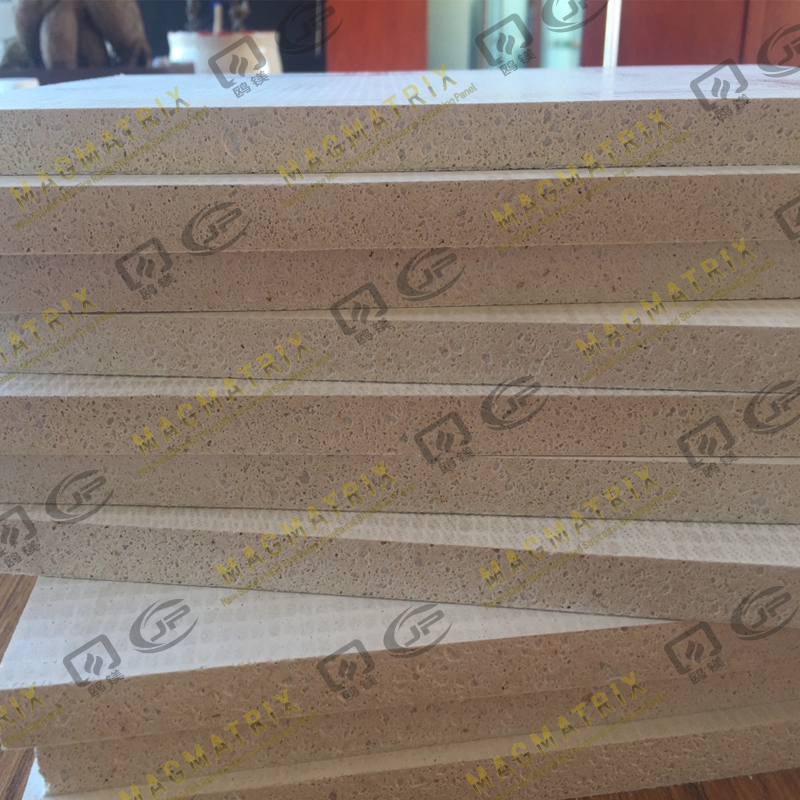 BMSC 517 New Sulfate MgO Board
BMSC 517 New Sulfate MgO Board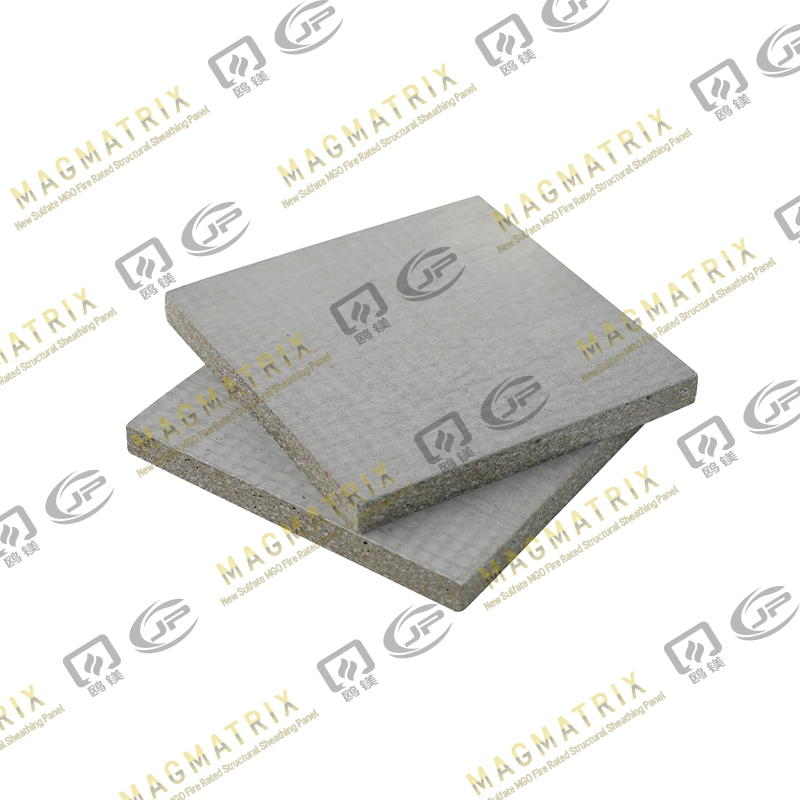 Multi-Support MgO Wall Sheathing Board
Multi-Support MgO Wall Sheathing Board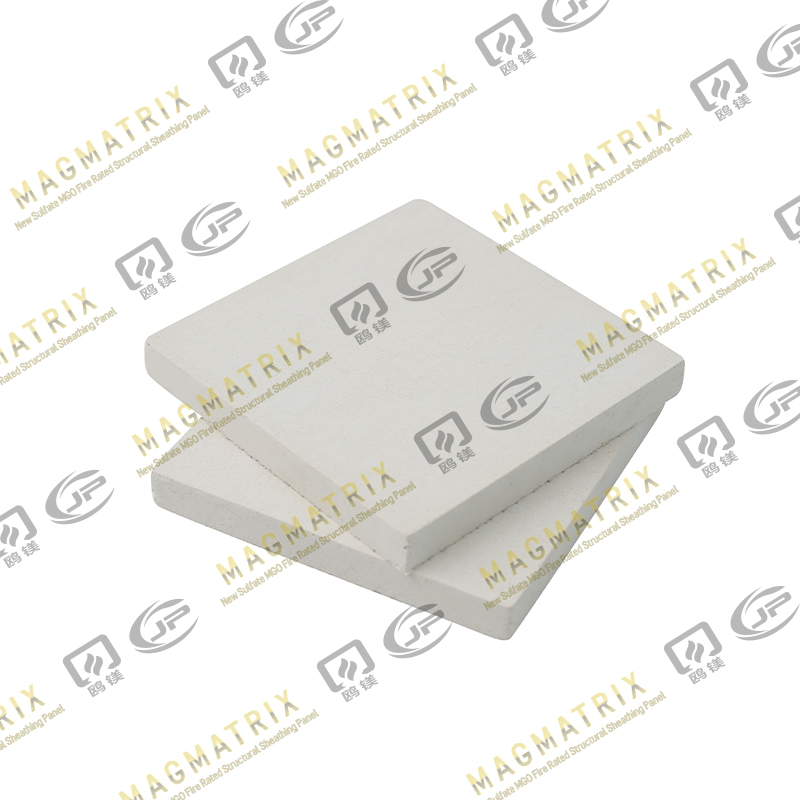 Perseverance MgO Wall Sheathing Board
Perseverance MgO Wall Sheathing Board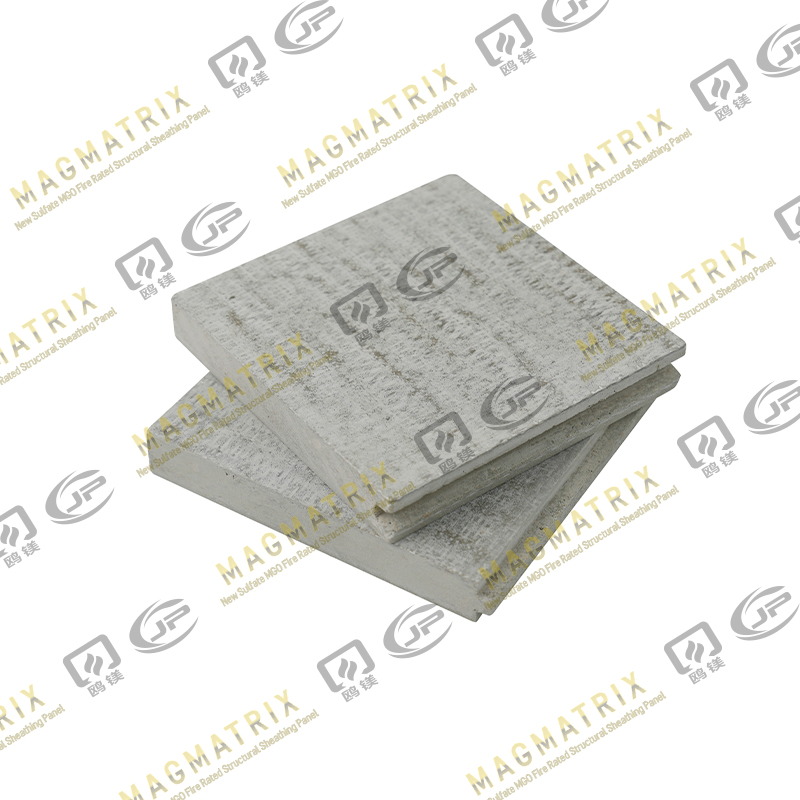 Multi-Support MgO Subfloor Sheathing Board
Multi-Support MgO Subfloor Sheathing Board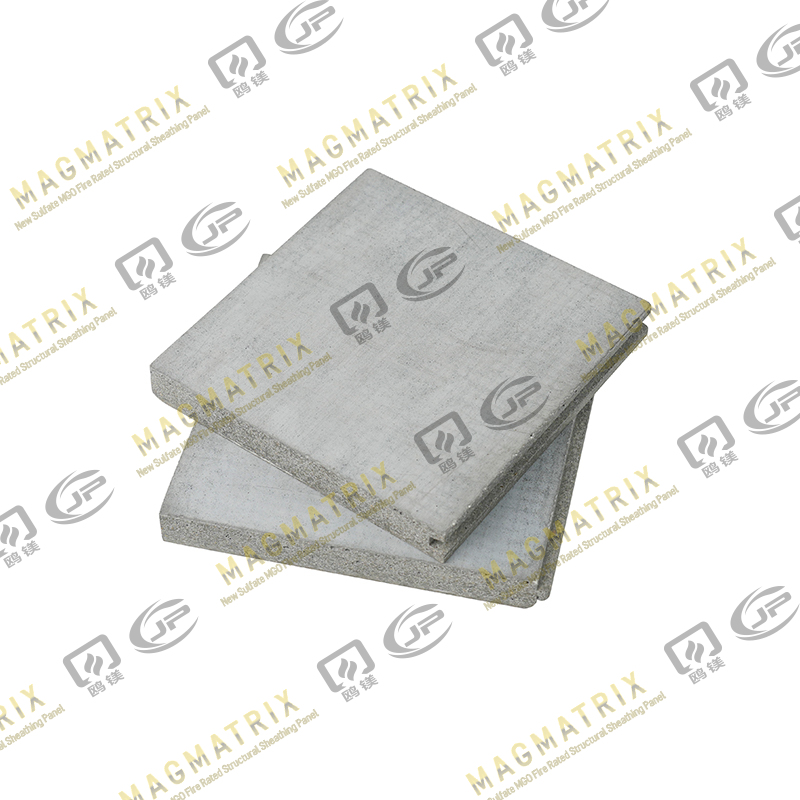 Perseverance MgO Subfloor Sheathing Board
Perseverance MgO Subfloor Sheathing Board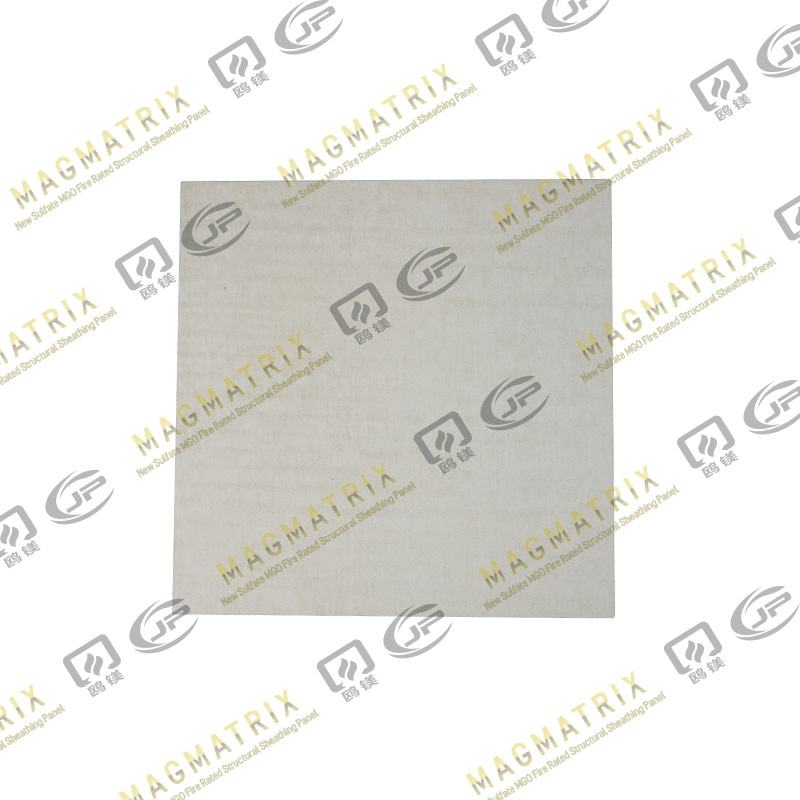 MagMatrix MgO Underlayment Panel/board
MagMatrix MgO Underlayment Panel/board


 English
English русский
русский Español
Español
